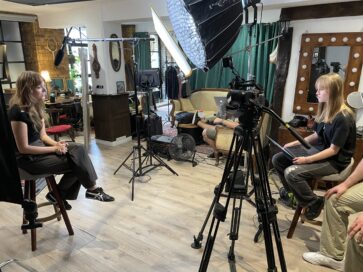The Different Types of Explainer Video (and When to Use Them)
Explainer videos are one of the most effective tools a company can use to communicate clearly and quickly. Whether you’re introducing a new product, breaking down a complex process, or trying to change behaviour, explainer videos cut through the noise and help your message land.
But not all explainer videos are created equal. There are several styles and formats, each suited to different goals, audiences, and platforms. Here’s a breakdown of the most popular types — and how to decide which is right for you.
1. Animated Explainer Videos
What it is:
A stylised animation that uses motion graphics, icons, text, characters or illustrations to explain a concept.
Best for:
– Simplifying abstract or complex ideas
– Saas or tech products
– Explaining systems, processes or data
– Budget-conscious campaigns (compared to live action)
Why it works:
Animation gives you complete control over the visual world. If it can be imagined, it can be animated. It’s perfect for explaining things you can’t easily show in the real world.
Read more: Why Animation is Still a B2B Video Powerhouse
2. Live Action Explainer Videos
What it is:
A real-world, filmed video — often featuring a presenter, customer, product demo, or company spokesperson.
Best for:
– Building trust and human connection
– Products that need to be physically demonstrated
– Professional services and consultancy
– Customer testimonials with an explainer angle
Why it works:
There’s something powerful about seeing real people talk to camera or show how something works. Live action adds personality and authenticity, which can be crucial in high-trust industries.
Read more: How to Humanise Your Brand with Video
3. Whiteboard Videos
What it is:
A visual story drawn by hand on a whiteboard (or digital whiteboard-style background), usually accompanied by voiceover narration.
Best for:
– Educational content
– Step-by-step breakdowns
– Budget-friendly explainers
– Internal training or onboarding
Why it works:
The drawing-in-real-time style keeps viewers engaged and makes the information feel easy to follow. It’s also an affordable, evergreen format that can be reused again and again.
4. Product Demo Videos
What it is:
A walkthrough of your product in action — screen recordings, physical demonstrations, or step-by-step tutorials.
Best for:
– Software companies (screen capture with narration)
– E-commerce or physical products
– Onboarding and support
– Closing deals (as sales enablement)
Why it works:
Showing is better than telling. Product demos give your audience clarity and confidence — especially if they’re on the fence.
Read more: Using Video to Close the Sale
5. Hybrid Explainer Videos
What it is:
A combination of live action and animation — for example, a talking head with motion graphics layered over the top.
Best for:
– High-impact brand storytelling
– Case studies and testimonials
– Thought leadership
– When you want to mix credibility with clarity
Why it works:
Hybrid videos offer the best of both worlds — the human connection of live action with the flexibility and clarity of animation.
6. FAQ or Myth-Busting Videos
What it is:
Short videos that address common questions, objections, or misconceptions — each focusing on one simple point.
Best for:
– Breaking down resistance in the sales journey
– Pre-empting objections
– Content series for email or social
– Internal communications
Why it works:
They’re short, targeted, and practical. Great for audiences who already have some awareness, and just need a nudge.
7. Company or “Who We Are” Explainers
What it is:
A top-level introduction to your business — who you are, what you do, who you help, and why you’re different.
Best for:
– Homepage videos
– Pitch decks
– Investor relations
– Recruitment
Why it works:
This kind of explainer tells your story in a sharp, confident, and human way — ideal for people discovering your brand for the first time.
Read more: How to Use Video on Your Website Homepage
Choosing the Right Explainer Video
The right format depends on your goal. Are you…
- Educating a cold audience? Try animation or whiteboard.
- Helping people understand your product? Go for a demo.
- Building trust? Use live action or hybrid.
- Looking for flexibility and scale? Animation gives you room to grow.
It also depends on your budget, timeline, and brand personality. The best explainer videos aren’t just clear — they’re aligned to your wider marketing and business strategy.
Final Thought
Explainer videos aren’t just about telling people what you do — they’re about making people care enough to take the next step. Whether it’s a 30-second animation or a full-blown product walkthrough, the best explainer videos feel effortless to watch and impossible to ignore.
Interested in working with a team that can help you bring your explainer video to life?
We help brands turn complexity into clarity with strategic, story-led content that drives action.
- 👉 Explore our video production services
- 👉 See examples in our portfolio
- 👉 Get the book Resonance on Amazon
- 👉 Fill out the form on our contact page and start the conversation!

 How does the PA role differ in TV and film?
How does the PA role differ in TV and film?